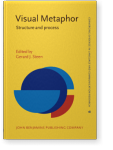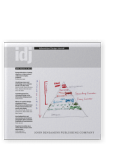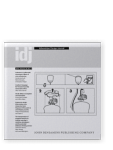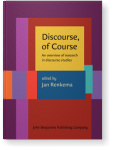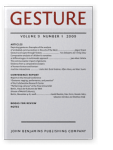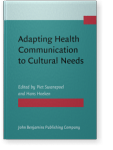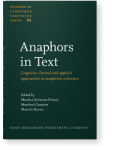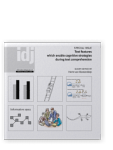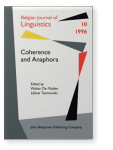Fons Maes
List of John Benjamins publications for which Fons Maes plays a role.
Articles
2018 Chapter 6. How visual form affects metaphoric conceptualization: The role of shape similarity Visual Metaphor: Structure and process, Steen, Gerard J. (ed.), pp. 147–162 | Chapter
2014 Effects of cognitive design principles on user’s performance and preference: A large scale evaluation of a soccer stats display Information Design Journal 21:2, pp. 129–145 | Article
We present an analytic and a large scale experimental comparison of two informationally equivalent information displays of soccer statistics. Both displays were presented by the BBC during the 2010 FIFA World Cup. The displays mainly differ in terms of the number and types of cognitively natural… read more
2013 Visual Ability in Navigation Communication Information Design Journal 20:2, pp. 136–147 | Article
2009 Schemes and tropes in Visual Communication: The case of object grouping in advertisements Discourse, of Course: An overview of research in discourse studies, Renkema, Jan (ed.), pp. 67–78 | Article
2009 The communicative import of gestures: Evidence from a comparative analysis of human–human and human–machine interactions Gesture 9:1, pp. 97–126 | Article
Does gesturing primarily serve speaker internal purposes, or does it mostly facilitate communication, for example by conveying semantic content, or easing social interaction? To address this question, we asked native speakers of Dutch to retell an animated cartoon to a presumed audiovisual… read more
2008 9. Visual health communication: Why and how do literate and low literate South Africans differ in their understanding of visual health messages? Adapting Health Communication to Cultural Needs: Optimizing documents in South-African health communication on HIV and AIDS, Swanepoel, Piet and Hans Hoeken (eds.), pp. 151–170 | Article
This chapter focuses on the use of stand alone visuals as a health promotion medium in South-Africa. First, we survey the effectiveness of visuals as health intervention medium in a low literacy context. Second, we present an interpretation framework for complex communicative visuals, based on two… read more
2007 Referential collaboration with computers: Do we treat computer addressees like humans? Anaphors in Text: Cognitive, formal and applied approaches to anaphoric reference, Schwarz-Friesel, Monika, Manfred Consten and Mareile Knees (eds.), pp. 49–68 | Article
“Is the referential behavior of language users sensitive to the human vs. computer nature of the addressee? In a production experiment participants were asked to help a distant partner to solve a problem by identifying objects on a computer screen. The addressee was either a distant human or a… read more
2006 'I have been here before': An investigation into spatial verbalizations in hypertext navigation Text features which enable cognitive strategies during text comprehension, Oostendorp, Herre van (ed.), pp. 8–21 | Article
We conducted an explorative study to investigate whether hypertext users use spatial expressions to conceptualize cognitive actions they are involved in, and how these expressions relate to the type of actions (executions versus evaluations) and the level of actions (syntactic vs. semantic vs.… read more
1999 What can production data teach us about the effectiveness of instructive text design variables? Document Design 1:3, pp. 171–181 | Article
This paper focuses on the way in which production tasks — in this case writing an instructive text — can provide us with data, which can be used to evaluate textual variables which are assumed to be relevant in processing, using, and hence designing instructive texts. The second and third sections… read more
1996 The Markedness of Abstract-Object Anaphors in Discourse Coherence and Anaphora, De Mulder, Walter and Liliane Tasmowski (eds.), pp. 161–183 | Article
Abstract. This paper focuses on the use in discourse of abstract-object anaphors (AOs), viz. the unmarked personal pronoun it and the marked deictic pronouns that (this). Current proposals made on this matter by Arie (1994), Gundel et al. (1993), Passoneau (1989) and Webber (1991) are critically… read more
